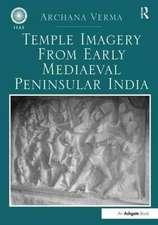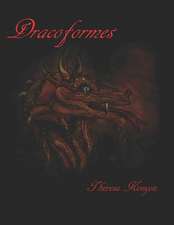The Warrior Saints in Byzantine Art and Tradition
Autor Christopher Walteren Limba Engleză Paperback – 31 oct 2016
Preț: 313.38 lei
Preț vechi: 357.13 lei
-12% Nou
Puncte Express: 470
Preț estimativ în valută:
59.97€ • 62.38$ • 49.51£
59.97€ • 62.38$ • 49.51£
Carte tipărită la comandă
Livrare economică 15-29 aprilie
Preluare comenzi: 021 569.72.76
Specificații
ISBN-13: 9781138253858
ISBN-10: 1138253855
Pagini: 384
Dimensiuni: 156 x 234 x 29 mm
Greutate: 0.5 kg
Ediția:1
Editura: Taylor & Francis
Colecția Routledge
Locul publicării:Oxford, United Kingdom
ISBN-10: 1138253855
Pagini: 384
Dimensiuni: 156 x 234 x 29 mm
Greutate: 0.5 kg
Ediția:1
Editura: Taylor & Francis
Colecția Routledge
Locul publicării:Oxford, United Kingdom
Cuprins
Contents: Foreword, George Huxley; Introduction; History and Antecedents: The Christian and Antique Background: The Old Testament; The New Testament; Pagan antiquity; The early Patristic period; The contribution of popular piety to the conception of the warrior saint; The Byzantine Warrior Saints: The Major Warrior Saints: The Etat Major: St Theodore Tiron and St Theodore Stratelates; St Demetrius; St Procopius; St Mercurius; St George; Other Major Warrior Saints: Sts Sergius and Bacchus; St Eustathius; St Kyrion and the XL Martyr of Sebasteia; St Hieron and the Martyrs of Melitene; St Menas of Egypt; St Artemius; St Arethas; St Martin of Tours; St Phanourios; The Minor Warrior Saints: St Christopher; St Cornelius the Centurion; The Holy Five of Sebasteia with Saints Orestes and Eustratius; Saint Joannicius; Saints Juventinus and Maximinus; Saint Longinus; Saints Nestor and Lupus; Saint Nicetas (Nikita); Saint Philotheus of Antioch; Saint Phoibammon; Saints Polyeuctus and Nearchus; Saint Sabbas Stratelates; Saint Sissinius of Antioch; Saint Speusippus and companions; Saint Zosimus; Appendix; Towards a Characterisation of the Warrior Saint: The terrestrial career of Warrior Saints; The beginnings of the cult of Warrior Saints; The early iconography of Warrior Saints; The emergence of an echelon of Warrior Saints; The function of Warrior Saints in the lives of terrestrial men; The aesthetics of Warrior Saints; Epilogue; Bibliography; Index.
Notă biografică
Long part of the Institut français d'études byzantines, and a member of the Assumptionist congregation in Paris, Christopher Walter is well-known for his work on the art and iconography of the Byzantine world. In addition to a great number of articles, many now collected in three selections, he is the author of Iconographie des conciles dans la tradition byzantine and Art and Ritual of the Byzantine Church.
Recenzii
'It is neither marginal nor recondite in its scope. It is a soundly researched commentary on the ways in which historians and art historians have approached the whole idea of Christian saints and their representation... This book is an eye-opener on the importance of warrior saints in life and art...' Robin Cormack, The Art Newspaper '... art historians and hagiographers alike will find Christopher Walter's book a mine of information, valuable especially for its careful consideration of the views of early scholars, some of whom he critiques with a wry but gentle humour... there is no doubt that Christopher Walter has provided a treasury of insights and information. His book will provide an indispensable point of departure for all future discussions of the role and significance of warrior saints both in iconography and in Byzantine culture in general.' Jahrbuch der Österreichischen Byzantinistik
Descriere
In this study of the cult and iconography of Byzantine warrior saints, Christopher Walter delineates their origins and development as a distinctive category of saint, showing that in its definitive form this coincides with the apogee of the Byzantine empire in the 10th-11th centuries. With a repertory of their commemorations and representations, he sets out their iconographical types and the functions ascribed to them in the celestial army, supporting the terrestrial army on the offensive, and gaining a new protective role when it moved to the defensive. Features noted are the development of an echelon of military saints, notably in church decoration, which provides the surest basis for defining their specificity; and that their depiction, besides showing them as young, handsome and robust, resorted to 'twinning' them in pairs, calling attention to the camaraderie of soldiers. The work also opens a new perspective on the military history of the Byzantine Empire. The Byzantine ideology of war is seen consistently to follow that of the Israelites; protected and favoured by divine intervention, there was no need to discuss the morality of a 'just war'; and when considering Byzantine methods of warfare, due attention should be given to the important role they attributed to celestial help in their campaigns.

















